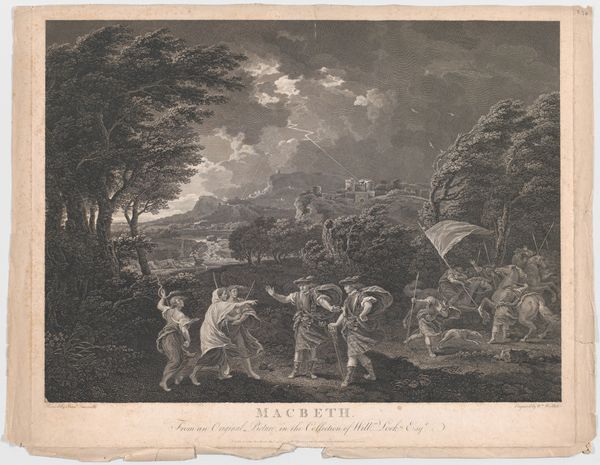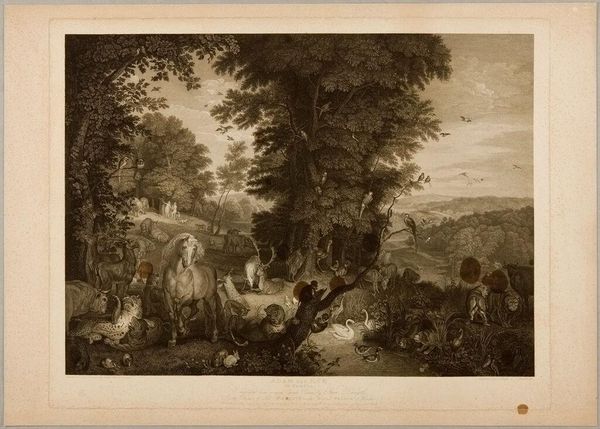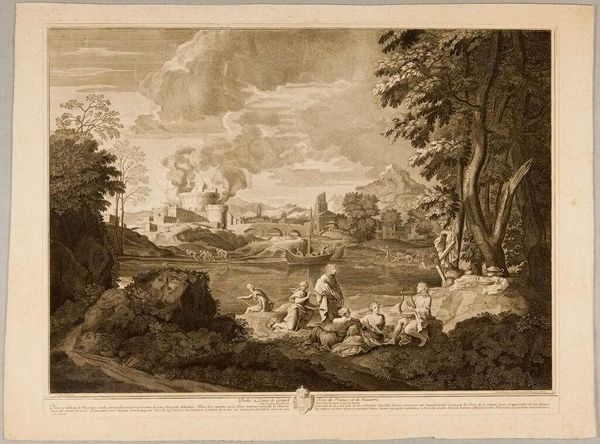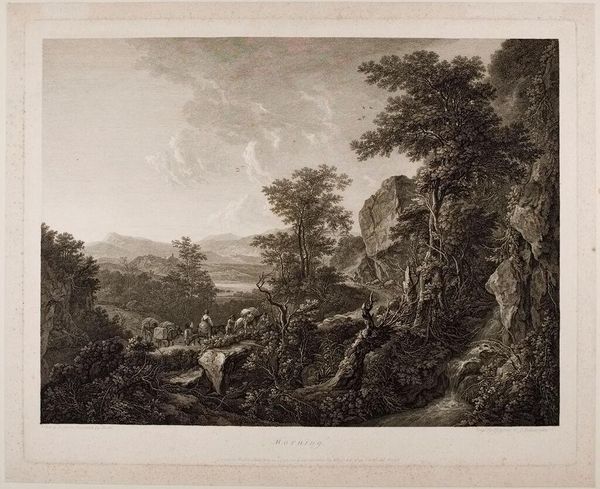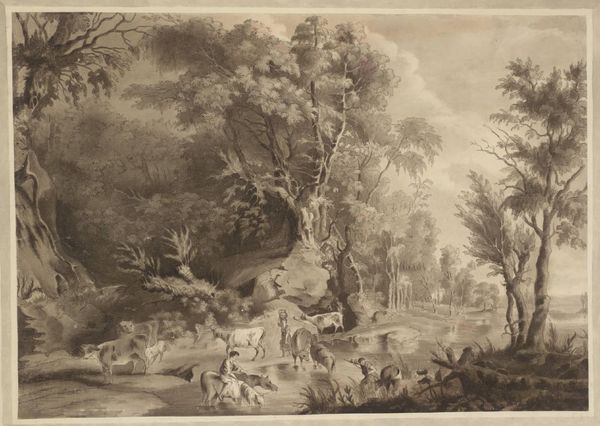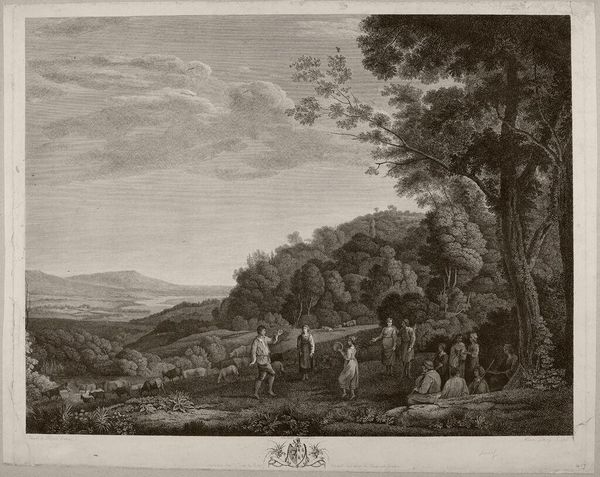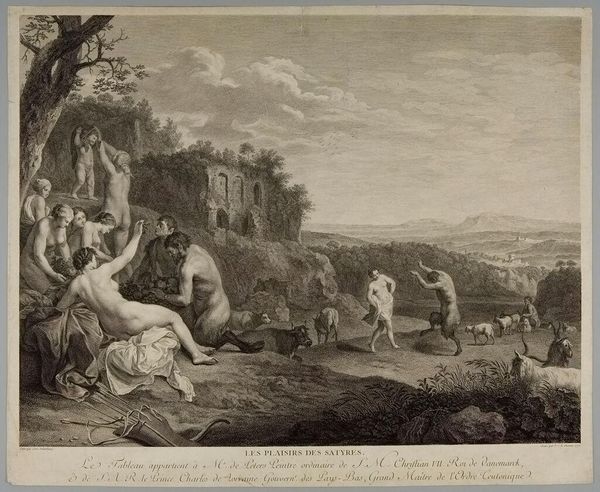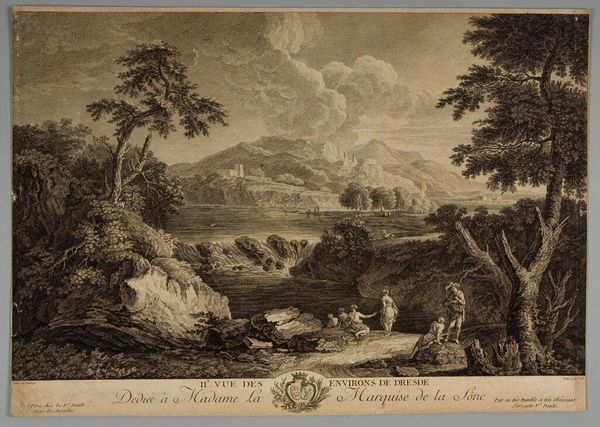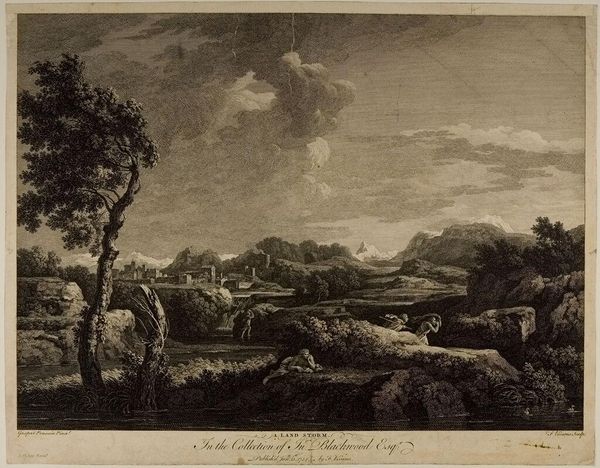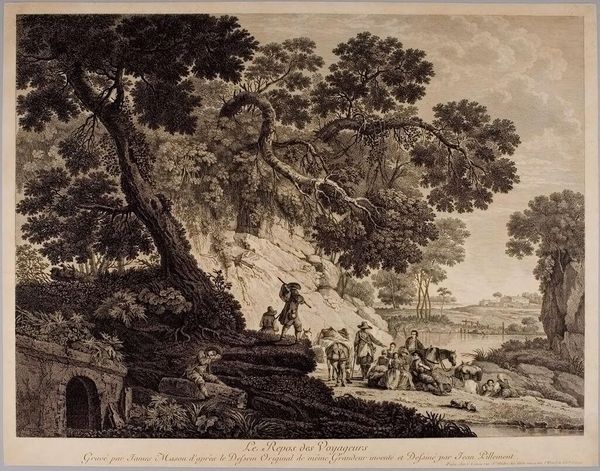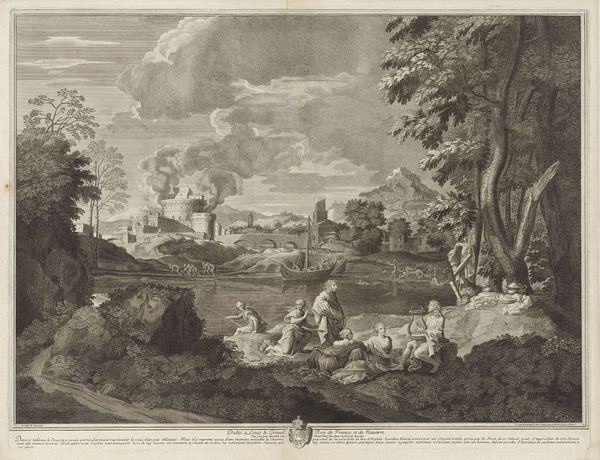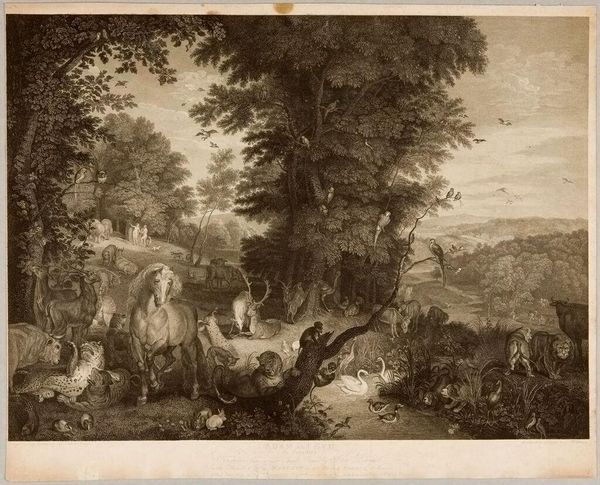
Copyright: CC0 1.0
Curator: This is William Woollett's "Macbeth," a print that vividly captures a pivotal scene from Shakespeare's tragedy. Editor: The stark contrast between light and shadow immediately strikes me; it's incredibly dramatic, almost theatrical in its composition. Curator: Indeed, Woollett's work, while seemingly representational, resonates deeply with the political and social anxieties of his time, reflecting on power, ambition, and the destabilizing forces within society. The witches, for example, embody fears of female agency and the subversion of patriarchal order. Editor: I see how the diagonal lines of the lightning bolt and the figures' gestures create a dynamic tension, drawing the eye across the landscape. It’s as if the very elements are in turmoil. Curator: Consider, too, the context of 18th-century England, where anxieties about political legitimacy and social upheaval were rampant. This image acts as a cautionary tale, exploring the consequences of unchecked ambition. Editor: Yes, the print's visual language—the play of light, the arrangement of figures—evokes a powerful sense of unease and foreboding. Curator: By interpreting this artwork through these lenses, we see how art engages with broader historical and cultural narratives. Editor: And I see how art uses formal elements to deliver that narrative.
Comments
No comments
Be the first to comment and join the conversation on the ultimate creative platform.
